England, France, and the United States were certainly no strangers to Hitler and his Nazi party philosophies during the 1930s. In fact, England and America were home to large fascist organizations while France hosted several influential right-wing fascist groups which would directly influence the Vichy government and its collaboration with Germany.
America saw the founding of the pro-Nazi “Friends of New Germany” (FoNG) in 1933 after Hitler gave his permission for the organization’s formation. The FoNG closely followed the Nazi party’s tactics including propaganda, harassment of Jews, and infiltration of other German American groups. Congress investigated the FoNG and determined it represented a direct subsidiary of the Nazi party. By late 1935, FoNG ceased to exist but was quickly replaced by the German American Bund with Fritz Julius Kuhn as its Bundesführer. The Bund mimicked the real Nazi party with respect to its organizational structure. Training camps were set up around the country and rallies were held with members displaying the Hitler salute. The Bund’s primary attacks were centered on Franklin D. Roosevelt, Jewish organizations, and Communists.
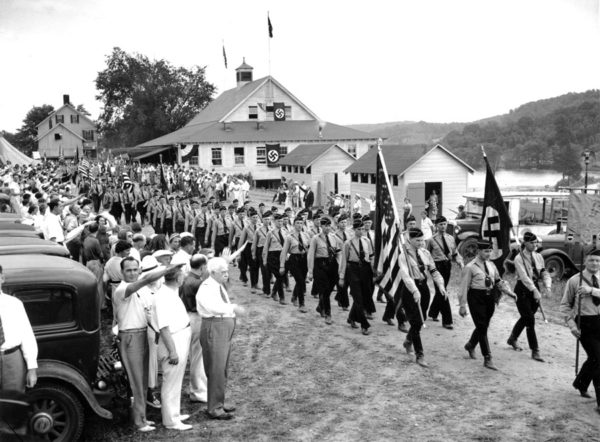
After Bund leaders traveled to Berlin, giving the impression that Hitler was supporting the Bund, Congress passed the 1938 Foreign Agents Registration Act requiring foreign agents to register with the United States State Department ⏤ an act which remains in place today. After this, Germany purposely tried to distance itself from the Bund. A rally at Madison Square Garden on 29 February 1939 resulted in violence between protesters and Bund storm troopers after the president was referred to as “Frank D. Rosenfeld” and the New Deal was referred to as the “Jew Deal.” Predictably, the Bund was dissolved in 1941. Sadly, it was followed in 1959 by the American Nazi Party, founded by George Lincoln Rockwell, and is known today as the World Union of National Socialists.
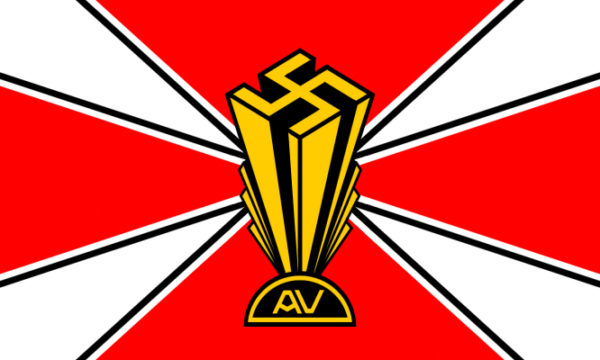
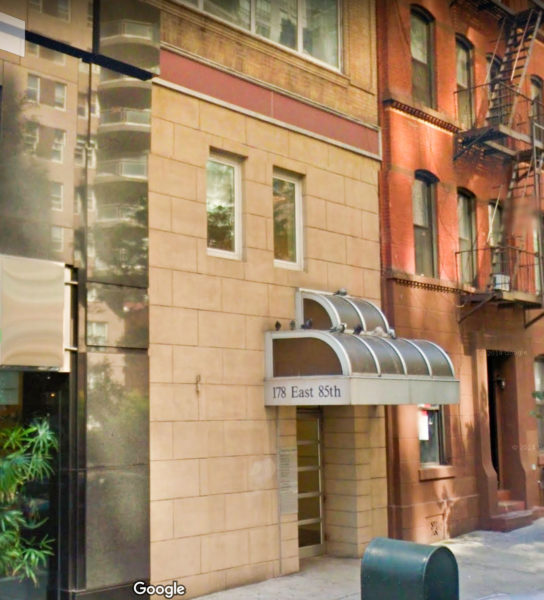
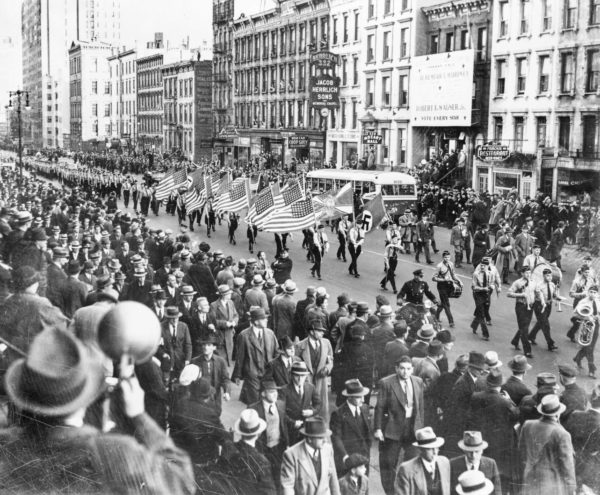
Did You Know?
Did you know that some of the common terms used today originated in the trenches of World War I? Take for example, “Having a chat.” During the Napoleonic Wars, lice were referred to as “Chats.” Lice were commonplace in World War I trenches, and the soldiers would sit around picking the lice off themselves. They began to say they were sitting around “chatting.”
Or, how about the term “pillbox” used to describe concrete bunkers? To the soldiers, the German bunkers looked like the little pillboxes they carried containing their medicines.
The term “Sniper” was used for the first time to describe German sharpshooters. It came from British officers who fondly remembered one of their favorite activities during their tour of duty in India. They went out bird hunting looking for the elusive ⏤ yep, you guessed right ⏤ tiny snipe.
When was the last time you saw someone just “Go over the top?” It’s what the soldiers did from time-to-time when serving in the trenches. In other words, they climbed out of the trench when ordered to attack and the term “Going over the top” took on a deadly meaning.
British Union of Fascists
Even before Hitler took power in Germany in 1933, a fascist party had been formed in the United Kingdom. Sir Oswald Mosley founded the British Union of Fascists (BUF) in 1932 as a far-right political party in response to the 1931 political defeat of its fascist predecessor, the New Party. Initially, the BUF was modeled on Mussolini’s fascist party in Italy and attracted quite a bit of attention in Britain and grew rapidly. Its members and supporters adopted the Hitler salute and were known as “Blackshirts” after the uniforms worn by the Nazis which the BUF mimicked. By 1936, the BUF had become further radicalized and embraced Hitler and the Nazi party’s philosophies and platforms. The common theme among the right-wing and fascist organizations of the 1930s was an extreme fear of Communism, virulent hatred of Jews, and the belief that a united Europe would emerge under Hitler and the Nazis. Watch historical video clips of BUF here.
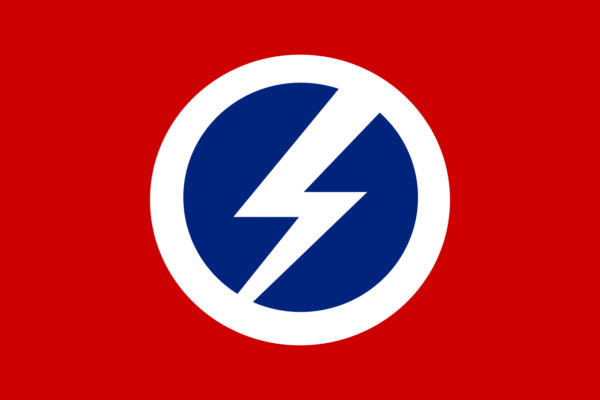
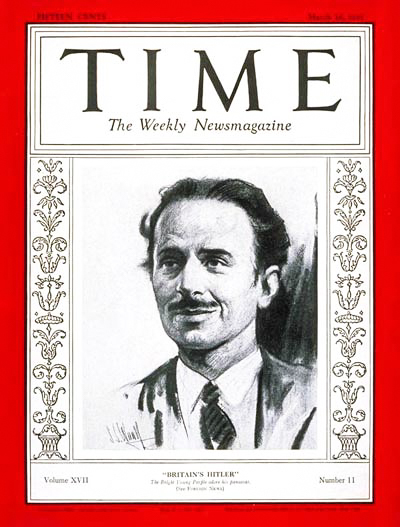
The BUF was all of these plus adopting a political platform of protectionism, technocratic, and replacing the British government with one styled after Mussolini’s government.
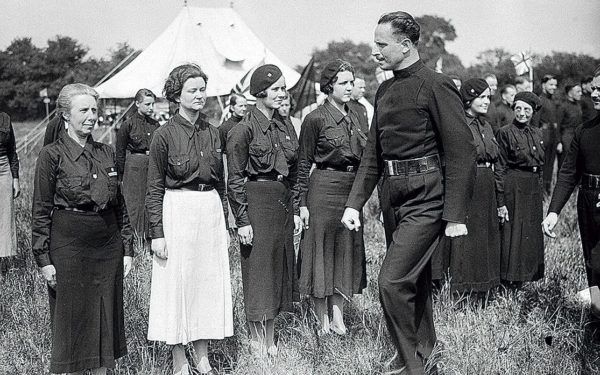
The British parliament passed the Public Order Act 1936 which banned political uniforms (i.e., the blackshirt uniforms) and addressed political violence. However, the BUF managed to get several of its members elected to local government seats in 1937 but was unsuccessful in placing anyone at the national level. During the mid-1930s, violent clashes with BUF opponents and anti-fascists began to alienate its mainstream members, the general public, and media supporters with the result that membership started to decline. Over a two-year period (1934-35), the BUF emphasized anti-Semitism which also ran counter-productive to their political goals and membership goals.
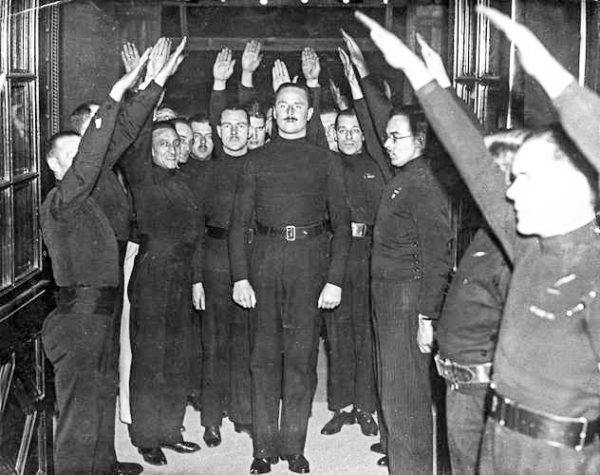
Towards the end of the 1930s, British public opinion had turned against Hitler and Germany. The BUF’s membership by then topped out at 20,000. On 23 May 1940, the government banned the BUF and Mosley along with 740 others were arrested and spent the remainder of the war in prison or under house arrest. Prominent members of the BUF included David Freeman-Mitford (father of Diana and Unity Mitford), William Joyce (later nicknamed Lord Haw-Haw), John Philby (father of Soviet spy Kim Philby), and Frank Cyril Tiarks (Director of the Bank of England).
Let’s Meet Sir Oswald Mosley
Oswald Mosley (1896-1980) was born into wealth and his family could trace its roots back to the 12th-century when King John ruled. Oswald’s father was related to King George VI’s queen, Lady Elizabeth Bowes-Lyon (or, as we know her, Queen Elizabeth II’s mother ⏤ the Queen Mother). Oswald was the eldest son and upon his father’s death in 1928, Oswald inherited the baronet title and became Sir Oswald Mosley.
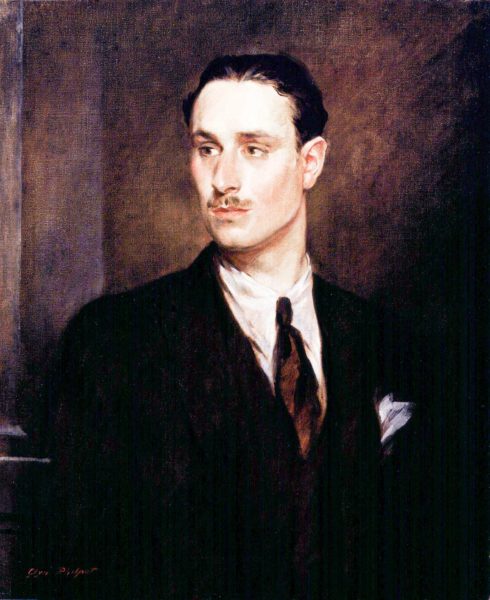
Mosely entered the Royal Military College, Sandhurst in 1914 but was expelled six months later. He fought in World War I as an officer in a British cavalry unit before being transferred to the Royal Flying Corps. A crash rendered him with a limp for the rest of his life. After this little episode, Mosely went back to the trenches in France but was unable to continue in a combat role due to his flying injury and he spent the remainder of the war flying a desk.
In 1920, Oswald married his first wife, Lady Cynthia “Cimmie” Curzon (1898-1933). The wedding was the high point of the English social calendar that year but Cimmie harbored many reservations about her new husband. However, the couple did have three children. In the end, she was correct about her husband as Mosely went about having numerous affairs. The couple began to travel extensively and on one of their trips to India, Sir Oswald met and befriended Gandhi. Less than ten years later, Lady Cynthia died of peritonitis as a result of acute appendicitis. No problem for Sir Oswald as he had a mistress waiting in the wings ⏤ Diana Guinness, one of the six notorious British Mitford sisters.
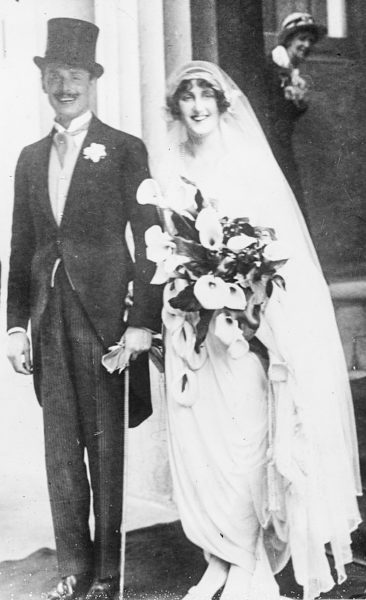
It seemed that Mosley was a member of every British political party at one time or another. He started out in the Conservative Party (1918-22), then moved on as an Independent (1922-24; 1940-48) and then a member of the Labor Party (1924-31), New Party (1931-32), BUF (1932-40) and finally, as the founder of the Union Movement (1948-73). Mosely was a committed member of the Fabian Society 1 as was his wife. He held numerous offices under the Labor Party but became disenchanted with them and founded the New Party in 1931 which became authoritarian, fascist, and radical in its ideas. Mosley became an admirer of Mussolini and his Italian fascist movement.
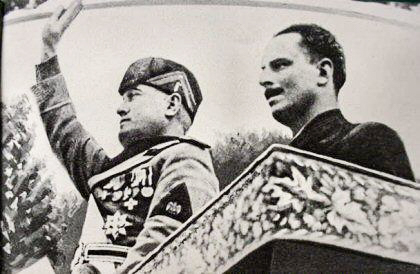
- Over one hundred years old, the Fabian Society is a socialist organization whose purpose is to advance the principles of democratic socialism via gradual efforts rather than by revolutionary overthrow.
The Mitford Sisters
There were seven Mitford siblings, six of whom were sisters and although the Mitford family was aristocratic and part of English high society, they were never wealthy. Each sister has a unique and controversial story to tell but in regard to World War II, Diana and Unity were certainly the most interesting. It was well publicized in Britain that Unity Valkyrie Mitford (1914-1948) adored Hitler and tried, in vain, to become his girlfriend. She would often spend months in Germany visiting and dining with Hitler (Hitler didn’t speak English, but Unity was fluent in German). Days after Britain declared war on Germany, Unity shot herself in the head but failed to kill herself. She eventually died in 1948 from complications of the failed suicide attempt.
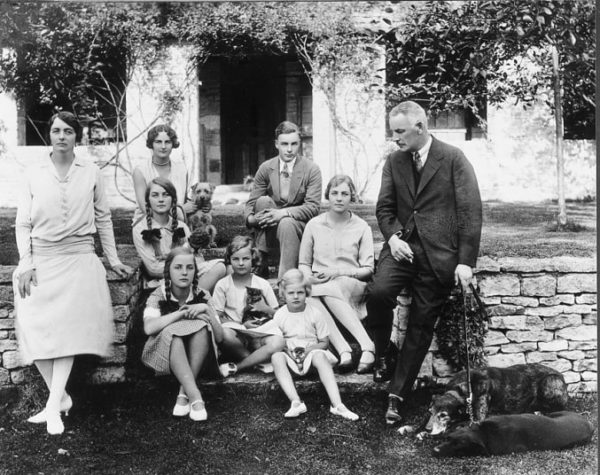
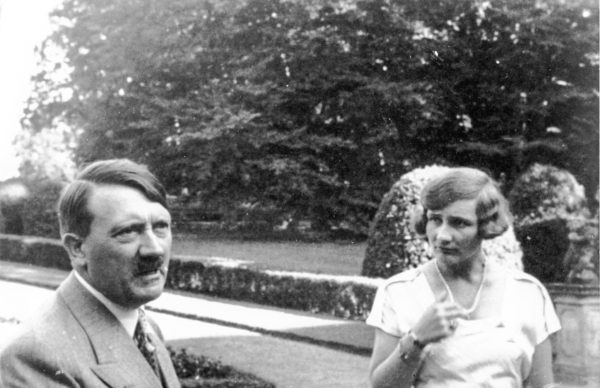
Diana Mitford (1910-2003) was a dyed-in-the-wool fascist ⏤ she and her sister, Jessica, never spoke to one another after 1939 as Jessica was a dyed-in-the-wool communist and hated Mosely for his fascist beliefs. Diana married a young Irish aristocrat in 1929 but this only lasted four years when Diana met the dashing young Sir Oswald Mosely in 1932. He was married to Lady Cynthia, but this did not stop Oswald and Diana from becoming lovers. Diana divorced her husband and moved into a flat around the corner from the Mosely home. Oswald refused to divorce Cynthia, but fate played into Diana’s hand when Cynthia died in 1933. Diana moved in with her lover and they eventually married in 1936 in Germany at Joseph Goebbels’s house with Hitler in attendance as a guest. Hitler’s gift to the newlyweds was a silver framed picture of . . . himself. Throughout their marriage, Oswald would continue having affairs with other women while Diana accepted his behavior.
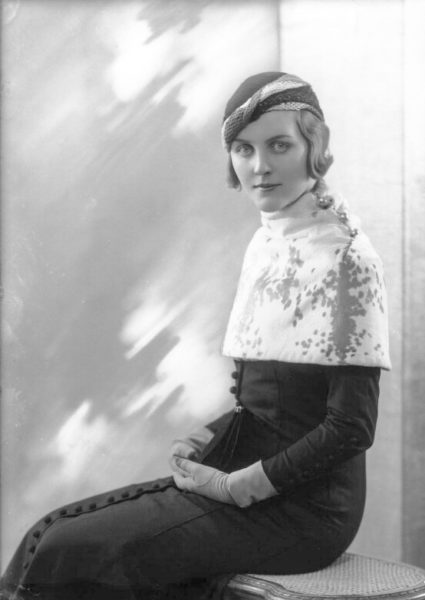
In 1934, Diana visited Germany with the nineteen-year-old Unity. There, they attended the Nuremberg Rally where Albert Speer introduced the Cathedral of Lights. The following year, Unity introduced her sister to Hitler whom Diana liked very much and later that year, returned for the Nuremberg Rally where Hitler personally entertained the two Mitford sisters. Their trip to Germany in 1936 saw the sisters attend the Berlin Olympics and again, Hitler saw to it they were adequately taken care of. Learn more about the Mitford Girls here.
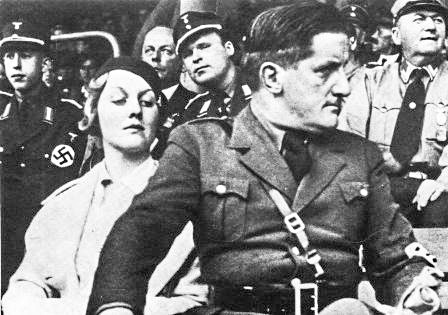
Pre-World War II British Fascists Activities
Throughout the mid- to late-1930s, Mosley and the BUF espoused anti-Semitism. In April 1935, Mosley challenged the Jewish community and its interests in Britain including commerce, finance, press, cinema, and Jewish-owned sweatshops. In October 1936, Mosley and his black shirts marched through an area of London heavily populated with Jewish residents. Violence broke out and the ensuing melee became known as the “Battle of Cable Street.” Marches, rallies, and other public disruptions continued until 1939. The BUF’s public popularity turned to hostility after the fall of France and commencement of the Blitz. Watch video clips of a 1937 rally here.
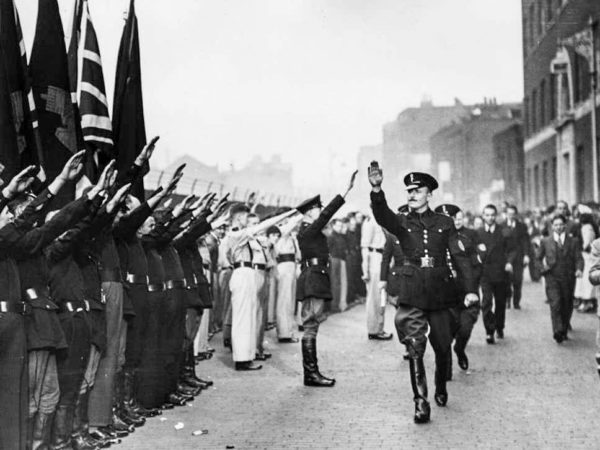
World War II
At the outbreak of World War II, Sir Oswald Mosely was interned as a “foreign agent” under Defense Regulation 18B. British intelligence, MI5, considered Diana “to be far cleverer and more dangerous than her husband…” On 29 June 1940, Diana was arrested and taken to a London prison. Winston Churchill personally intervened and the couple were allowed to sit out the war together albeit in prison. In 1943, Mosely suffered from ill health and the couple was released but put under house arrest until the end of the war (their passports were not returned to them until 1949).
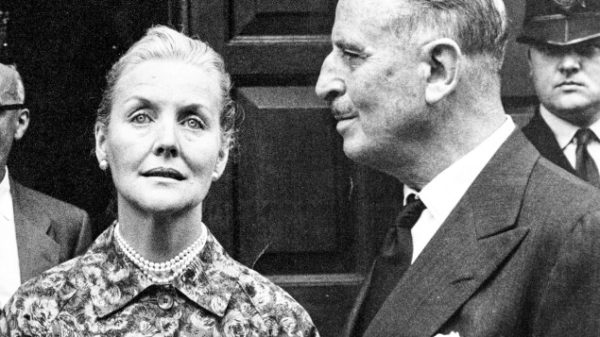
Post-War
Mosely never again achieved the political accomplishments as he had during the inter-war period (the years between World Wars I & II) despite forming the Union Movement in 1948. The Mosley’s maintained two homes ⏤ one in London and one in Paris where they became good friends with their neighbors, the Duke and Duchess of Windsor (the Duke was an admirer of Hitler). The couple was banned from any British Embassy functions in Paris. They ended going through another marriage ceremony in France because Hitler had kept their original marriage license and it had presumably, been destroyed.
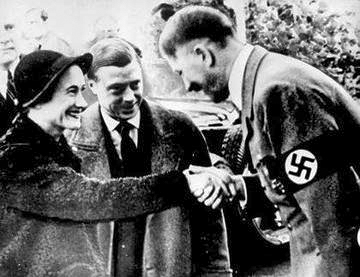
Diana remained a passionate fascist and supported the BUF before the war and continued to support its philosophies which lived on through BUF’s successor organization, the Union Movement. She was a principal financial contributor to the movement until 1994. Diana was fiercely anti-Semitic and glossed over Hitler’s role in the Holocaust. She was an unrepentant Nazi until the day she died. Watch an interview with Diana Mitford here.
Mosely called for a single nation-state for Europe (sound familiar?). In 1959, Sir Oswald stood for election but lost with only 7.6% of the vote. His platform was based on anti-immigration, prohibition of mixed marriages, and repatriation of immigrants living in England. He tried again in 1966 and this time, lost by an even lower margin of 4.6%. Mosely died in France on 3 December 1980 leaving Diana a widow for twenty-three years until her death. Watch an interview with Sir Oswald Mosely on his views of a single European nation-state here.
✭ ✭ Learn More About British Fascists and Sir Oswald Mosley ✭ ✭
Bryan, J. III and Charles J.V. Murphy. The Windsor Story. New York: William Morrow & Company, Inc., 1979.
Courcy, Anne de. Diana Mosley: Mitford Beauty, British Fascist, Hitler’s Angels. London: Chatto & Windus, Random House, 2003.
Lovell, Mary S. The Sisters: The Saga of the Mitford Family. New York: W.W. Norton & Company, 2001.
Mosley, Diana. The Duchess of Windsor: A Memoir. London: Gibson Square Books, 2012.
Mosley, Diana and Selina Hastings. A Life of Contrasts. London: Gibson Square Books, 2008.
What’s New With Sandy and Stew?
We’ve added our last trip to our 2020 itinerary. After one year’s absence from Paris, Sandy and I will trek on back to the City of Light in mid-September. One of the highlights for us will be the opportunity to meet some of our readers in and around the city. Each of them has a unique story and I’m looking forward to hearing the expanded versions.
Thank you to all of you who subscribe to our bi-weekly blogs. It seems there isn’t a day that goes by where we don’t increase our readership. Please let your history buff friends and family members know about our blogs.
Someone Is Commenting On Our Blogs
I’d like to thank Tristan H. for contacting me in regard to her school project. Tristan is a seventh grader in Southern California and her project for the National History Day Contest (link here) is about women spies in the Special Operations Executive. The theme this year is “Breaking Barriers in History.” She has asked me some very good questions which will add to her analysis and exhibit.
One of our next blogs, Breaking Barriers in History, will focus on National History Day and the 2020 contest. I hope you’ll tune in.
If there is a topic you’d like to see a blog written about, please don’t hesitate to contact me. I love hearing from you so keep those comments coming.
Why Would You Want To Buy Our “Walks Through History” Books?
Simple.
You like to travel and experience history and historical events. You like to see original buildings that had a significant impact on the people and events of the history you’re engaged with. You want to know the stories behind the brick and mortar in front of you.
The walking tour books are meticulously researched so you can go directly to those sites and learn about the building’s history as well as an introduction to some of the more interesting people associated with it.
We Need Your Help
Please tell your friends about our blog site and encourage them to visit and subscribe. Sandy and I are trying to increase our audience and we need your help through your friends and social media followers.
Thank You
Sandy and I appreciate you visiting with us. We have some exciting things on the horizon and we’ll keep you updated as we go along.
Share This:
Follow Stew:
Find Stew’s books on Amazon and iBooks.
Please note that we do not and will not take compensation from individuals or companies mentioned or promoted in the blogs.
 Walks Through History
Walks Through History
Copyright ©2020 Stew Ross


Greetings, Stew – Just wanted say again that your weekly history lessons keep me in awe of the WWII era. We humans are a shameful lot, for sure, for it seems that we keep welcoming back the same evil. Haven’t watch the TV since early morning, but I must do it soon to see the awful crap going on in Richmond. (I resided in lovely VA for 55 years.) Whoever is credited for Eccles. 3:15 sure called the shot accurately. Looking forward to your Gestapo books, and Moorehead’s Village of Secrets should arrive today. Take care.
Hi Darryl. Great to hear from you again! Thanks for your kind words about our “history lessons.” I’ve been distracted from getting the new book completed. I’ve decided to devote Saturdays and Sundays to working on the book exclusively. It’s too bad we forget about history as it certainly contains many lessons that we should not repeat. STEW